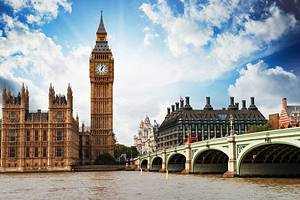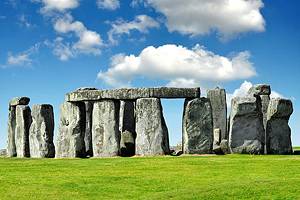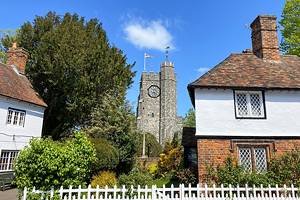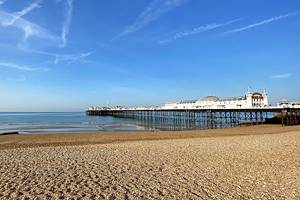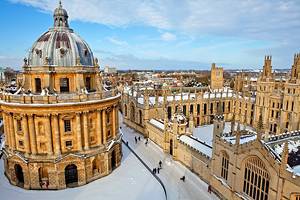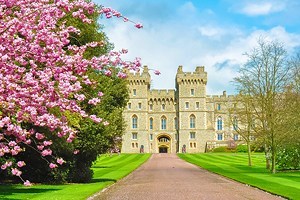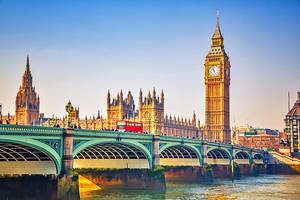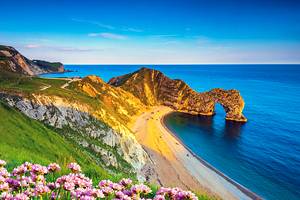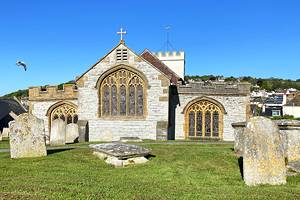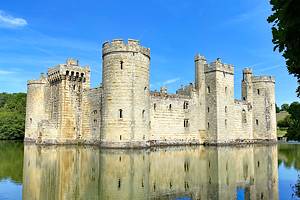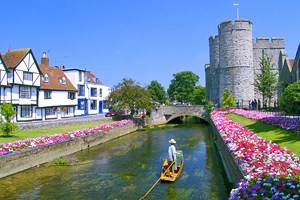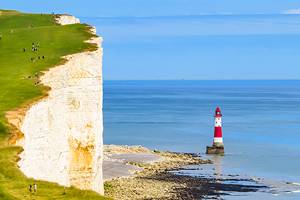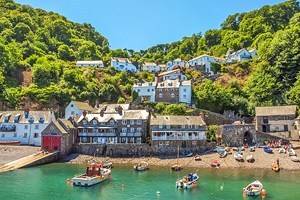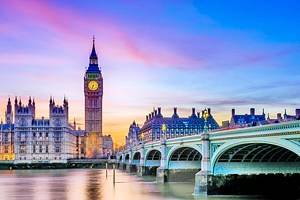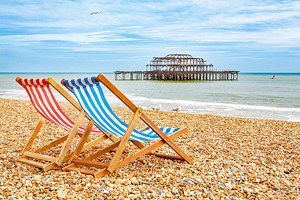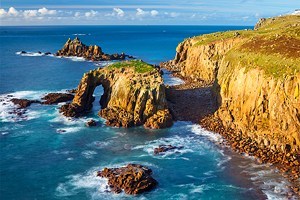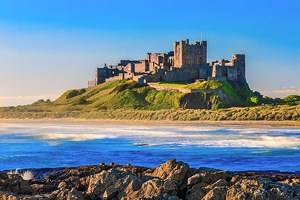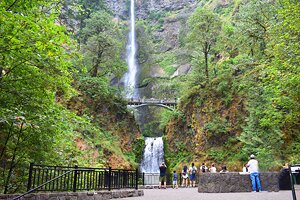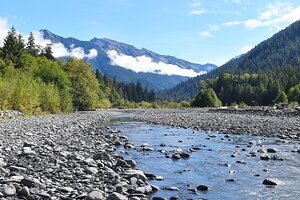19 Best Places to Visit in the UK
Consisting of England, Scotland, Wales, and Northern Ireland, the United Kingdom (UK) has long been one of the world's most popular tourist destinations. For most travelers, like me, the country's appeal has as much to do with its diverse scenery as it does its rich cultural heritage. In fact, the best places to visit in the UK include everything from beautifully preserved country estates and picturesque castles to its many big city art galleries and museums.
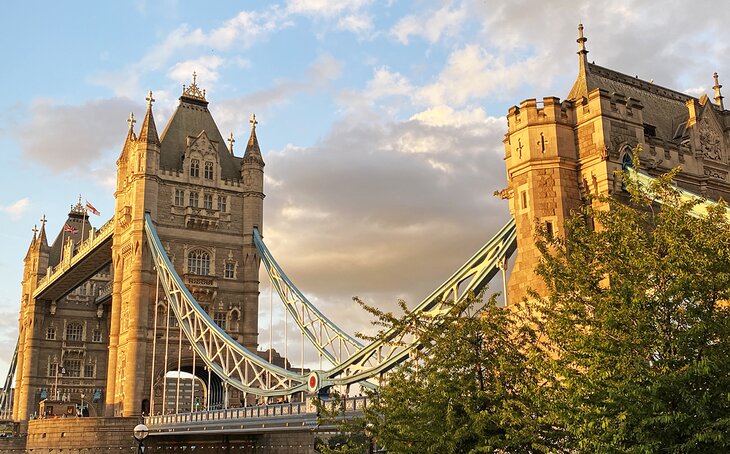
You'll find one of the greatest pleasures of a UK vacation, however, is just how easy it is for you to explore this fascinating, diverse, and relatively small country. The UK could easily fit into the state of Texas with room to spare, so you can base yourself in a couple of cities and simply take a train, bus, or ferry to explore other areas.
One of my favorite day trips from London, for example, is to take the 90-minute train ride to beautiful Salisbury. Once there, you're only a short bus ride or tour away from one of the country's most recognizable attractions, Stonehenge. Want to hop between the Scottish cities of Edinburgh and Glasgow? A one-hour train ride will deposit you in the heart of either city.
Sure, the UK can seem like a very busy travel destination. But plan your sightseeing adventures carefully with my list of the best places to visit in the UK and you'll have no problem making the most of your time.
- 1. London: The UK's All-in-One Destination
- 2. Edinburgh: Scotland's Capital
- 3. Roman-Era Bath
- 4. Ancient Stonehenge and Medieval Salisbury
- 5. Royal Windsor
- 6. Idyllic England: The Cotswolds
- 7. The Magical Lake District
- 8. Medieval York and its Minster
- 9. The University Towns of Cambridge & Oxford
- 10. England's Pilgrimage City: Canterbury
- 11. Loch Ness and Inverness
- 12. Northern Ireland's Giant's Causeway
- 13. Liverpool: Home of The Beatles
- 14. Manchester: England's Football Mad City
- 15. Cardiff: The Capital of Wales
- 16. The Channel Islands
- 17. Glasgow & Loch Lomond
- 18. Snowdonia: Wales' Biggest Mountains
- 19. Belfast
1. London: The UK's All-in-One Destination
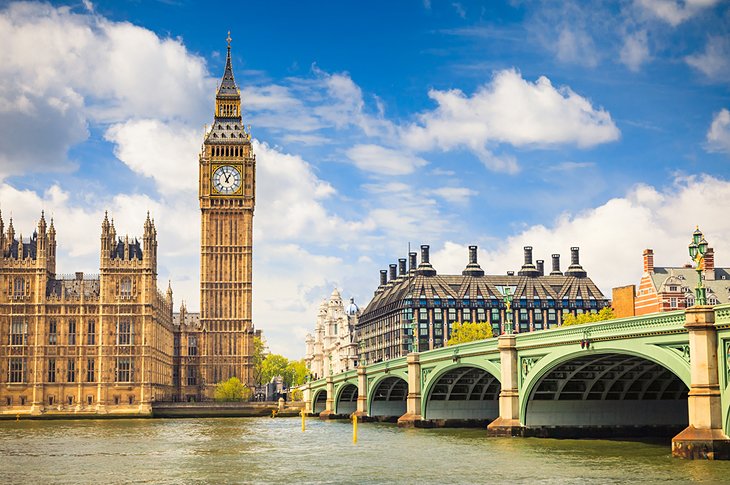
While it's possible to plan a trip to the UK without actually visiting London, it's certainly not a recommendation I'd make. I typically begin my UK visits by spending a few days in the nation's sprawling capital while getting over my jet lag before venturing out to my planned final destination (or destinations).
There are plenty of attractions to keep you busy. Want to learn more about the UK's rich history? You're literally spoiled for choice here as London boasts more than 200 world-class museums and art galleries to explore.
In the City of London, the heart of the old Roman city, you'll find evidence of pretty much every period in history ever since. Some of the top attractions in London are located here, including the Tower of London.
Located beside the spectacular Tower Bridge on the banks of the River Thames, this former palace and prison includes highlights such as the iconic 1,000-year-old White Tower, with its fascinating displays of armor and weaponry, and the Jewel House, home to the Crown Jewels. I always make a return visit at sunrise or sunset to grab an iconic photo of the Tower of London framed by Tower Bridge.
If you're a fan of Britain's Royal Family, you'll want to head to Buckingham Palace, London's Royal home since Queen Victoria's reign. Here, you can enjoy the colorful pomp of the Changing of the Guard or even take a tour of the Palace's State Rooms. Spaces are limited, so be sure to book in advance as they're only open for a few weeks each year.
From here you can wander along the Thames to the city's Whitehall Road area. Here you'll find Big Ben and the Parliament Buildings, as well as Westminster Abbey, the scene of many a royal wedding.
Another area to visit in London is South Kensington, home to the city's best museums, including the Victoria and Albert Museum and the Natural History Museum, as well as the famous Harrods department store. Also check out Trafalgar Square, home to the iconic Nelson's Column and the National Portrait Gallery.
And be sure to make the most of London's excellent transport system. Whether you go by bus or by underground, the system's now so good that you can simply use a debit or credit card to tap in and out as you go. It really is very easy, and once you've mastered that famous map of the city's "Tube" network you'll be traveling like a Londoner.
2. Edinburgh: Scotland's Capital
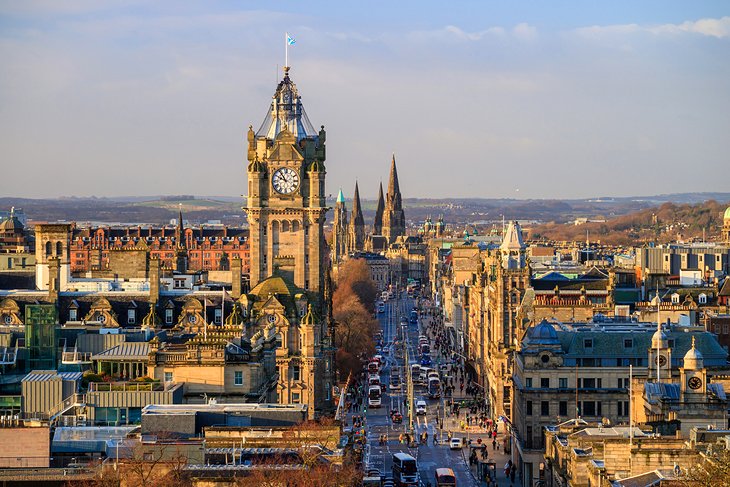
One of the UK's most attractive cities, the capital city of Edinburgh is also one of the UK's most visited destinations. Popular for its many well-preserved historic buildings, Edinburgh is perhaps best known as the home of the majestic Edinburgh Castle.
Perched high above the old city on a rocky promontory, this 13th-century royal fortress includes highlights such as the famous One O'Clock Salute, held daily at Half Moon Battery, as well as the Scottish Crown Jewels in the Royal Palace. Also worth seeing are the Scottish National War Memorial and the famous Stone of Destiny, the Stone of Scone, which only returned to Scotland after being held for 700 years in London.
From the castle, I always find it easy to explore the other most important historic sites in the city. Follow your nose downhill from the castle to the Old Town via the famous Royal Mile, a delightful medieval cobbled street that's immensely fun to walk. Sure, there are plenty of the usual tacky tourist and souvenir shops, but skip these and look out for the area's fine old architecture, boutique shops, cafés, and restaurants, as well as trendy art galleries and studios.
Edinburgh Old Town is also where you'll find the splendid old Palace of Holyroodhouse. From here, I usually make my way to Princes Street and New Town before looping back around to the castle. This broad, more modern avenue was planned in the late 18th century and is extremely popular for its shopping and dining opportunities. It's also where you'll find attractions such as the Royal Botanical Garden and the National Gallery of Scotland.
3. Roman-Era Bath
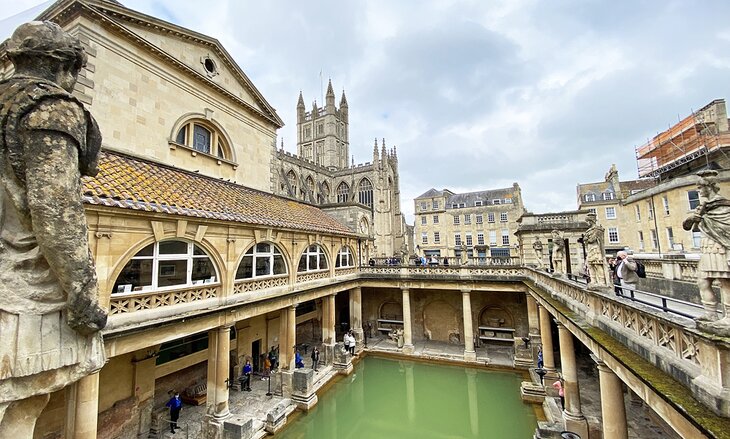
Although one of the UK's smaller cities, Bath more than makes up for its diminutive size with a multitude of things to see and do. Named after its famous Roman Baths, this beautiful city has been luring visitors like you and me to its healing waters for more than 2,000 years.
Gushing from three hot springs, the water-known to consist of 43 different minerals, hence its curative properties-travels upwards some 3,048 meters at a rate of 275,000 gallons per day, before spilling out at a consistent 46.5 degrees Celsius. It's a truly awesome sight, and also a little eerie to think that you're standing just feet away from the very hot springs that Romans and early Britons enjoyed some 2,000 years before you got here.
While it's not possible to bathe in the original Roman Baths (try it and you'll be arrested!), a number of nearby spas, most notably the modern Thermae Bath Spa, offer a unique opportunity to enjoy the city's famous waters. This must-do experience features a stunning rooftop pool using the same waters as the Roman Baths, and all with incredible views of city landmarks such as Bath Abbey.
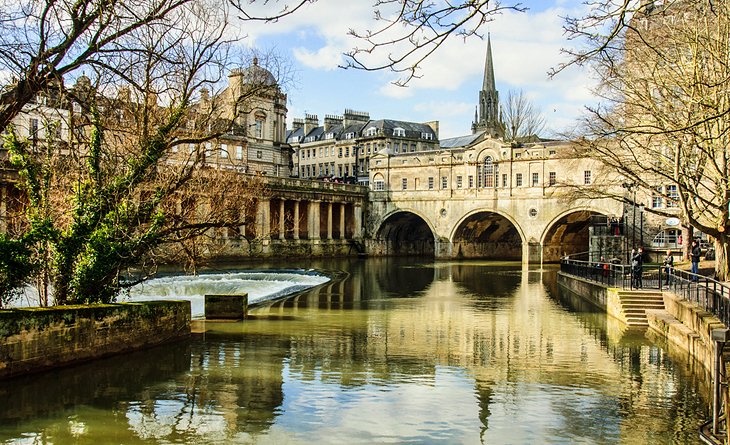
In addition to its ancient history, Bath is also famous for its lovely Georgian architecture. The best examples can be seen along the magnificent, curved Royal Crescent, with its palatial townhomes. One of them, No.1 Royal Crescent, is now a museum that offers a fascinating peek into life during Georgian times.
While Bath is served by the same London rail service as the neighboring port city of Bristol, it's one of those increasingly forward-thinking cities that makes it easy for car drivers, too. My most recent visit in the summer of 2022 was via car, and I avoided traffic and hassle by parking at the extremely affordable Landsdowne Park and Ride facility on the outskirts of the city. Not only is it inexpensive with plenty of availability, but regular bus services will also whisk you away to the heart of the city in just 10 minutes.
Read More: From London to Bath: Best Ways to Get There
4. Ancient Stonehenge and Medieval Salisbury
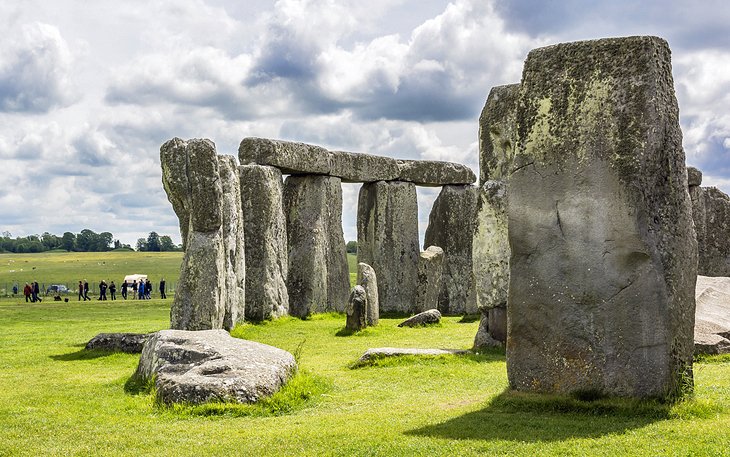
One of the planet's oldest World Heritage Sites, Stonehenge has been a place of pilgrimage for more than 4,500 years. It was believed to have been erected as a place of worship, but these days, the crowds consist of tourists drawn by the sheer scale of this magnificent monument to mankind's ingenuity.
It's a sprawling site, covering an area of more than 20 square kilometers and boasting a state-of-the-art visitor center. Here, you can catch a fascinating glimpse not only into the construction of Stonehenge but also its history since then.
But it does get busy, so be sure to plan well ahead and purchase a timed ticket for the day of your visit. Better still, splurge a little on one of the attraction's new VIP admission packages. This unforgettable experience guarantees your spot on a fun "Stone Circle Experience" that includes free time to wander the site on your own. The verdict? It's a must-do.
Be sure to also spend time exploring the nearby medieval city of Salisbury, located just 16 kilometers south of Stonehenge. You'll be rewarded with a chance to visit one of the country's most famous cathedrals, dating back to 1220 and home to an original Magna Carta.
Afterward, spend time wandering the old city center with its many fine churches and historic medieval architecture. Not only are there a number of first-rate places to stay here (I'm partial to the Mercure Salisbury White Hart Hotel for its central location and 4-star quality and cleanliness), but great little intimate eateries like the Cosy Club on Crane Street. The food here is home-cooked, locally sourced, tasty... and served in an extremely patriotic British setting.
Read More: From London to Stonehenge: Best Ways to Get There
5. Royal Windsor
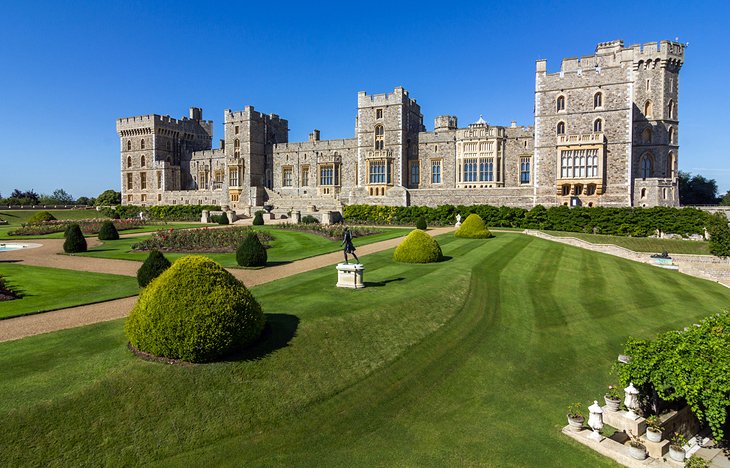
The historic town of Windsor, conveniently located a short train ride west of Central London, offers plenty of fun attractions for tourists. In addition to its lovely Thames-side setting and the many medieval half-timbered buildings along its quaint old cobblestone laneways, it's also home to spectacular Windsor Castle, the most famous of the UK's royal castles.
This grand old castle has served as the summer residence of British royalty for more than a millennium. It was started by William the Conqueror in 1078 and is the world's largest inhabited castle. Highlights include the splendid State Apartments containing the Queen's Gallery and dining hall, each with magnificently painted ceilings and woodcarvings, and St. George's Chapel, famous as the home of the Knights and Ladies of the ancient Order of the Garter.
When you've had your fill of these historic buildings, be sure to also spend time exploring the castle's large and beautiful grounds, almost 10 kilometers long. You'll enjoy some truly memorable panoramic views over Windsor and its castle, and a number of picnic areas, some with barbecue grills, are available if you want to stop awhile.
Traveling with kids? Another area attraction worth visiting is Legoland Windsor. This fun family resort, set on 150 acres of parkland and just a short bus ride from Windsor town center, even boats a modern Lego-themed hotel if you're looking to make a weekend of it.
Also worth seeing is Royal Ascot, the UK's most famous horse-racing venue. While you might want to try to time your trip to coincide with the Royal Meeting held each June, you'll find yourself fighting often huge crowds, all dressed to the nines, here for what is after all one of the most important events on the country's social calendar.
6. Idyllic England: The Cotswolds
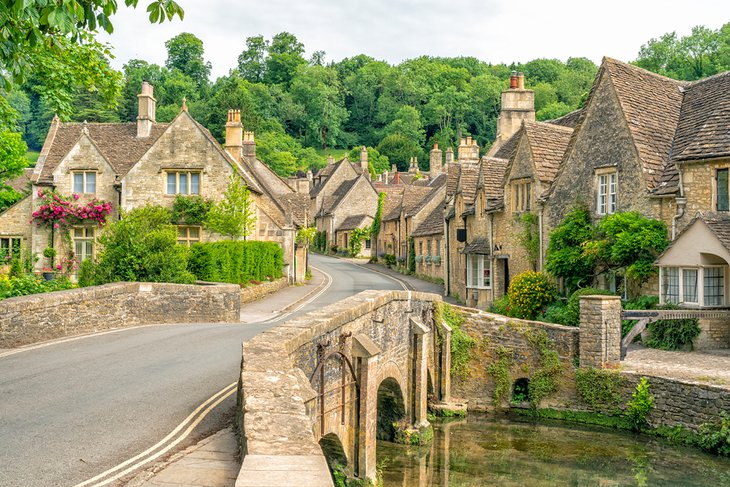
Covering almost 1,287 square kilometers of charming countryside, the beautiful Cotswolds is undoubtedly one of the most photographed corners of England. Its unrivaled pastoral scenery has earned it a reputation as one of the most beautiful places in the UK, ranking highly on many a traveler's bucket list.
Easy to get to from London and close to the popular tourist attractions of Bath and Bristol, the Cotswolds includes some of the best parts of the counties of Oxfordshire, Gloucestershire, Somerset, Wiltshire, Warwickshire, and Worcestershire.
Why visit? Well, if you're anything like me, you're here to experience a true taste of rural English life and explore its many quaint villages. You'll want to include the idyllic village of Bourton-on-the-Water on your Cotswolds itinerary. Nicknamed the "Venice of the Cotswolds," this popular vacation spot boasts a charming river setting and countless well-preserved cottages, some dating back to the 15th century, and all just begging to be photographed.
One of the most popular ways to do this is via the area's extensive trail network, including the excellent 164-kilometer-long Cotswold Way. Other fun things to do include horseback riding and biking, or simply soaking up the history of popular market towns such as Castle Combe or Tetbury.
7. The Magical Lake District
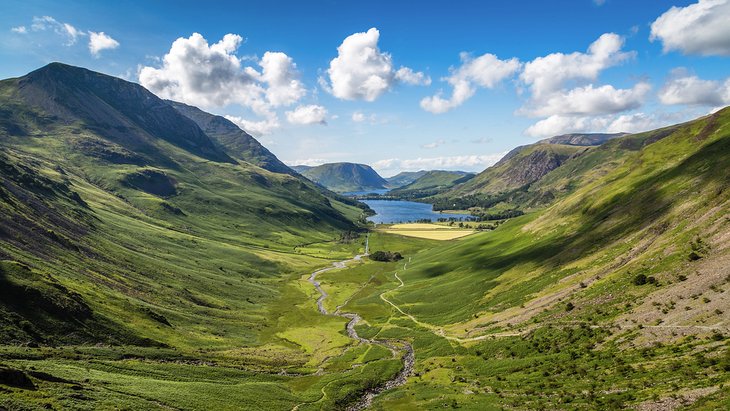
Located in the northeast of England not far from the border with Scotland, the spectacular Lake District in Cumbria covers an area of 1,448 square kilometers. Not only is it considered one of the most magical places to visit in the UK for its beautiful scenery, its reputation as a place of romance and great culture will forever be associated with its most famous former resident, Beatrix Potter.
It was Potter who in fact led the way with the conservation efforts that have preserved so much of the Lake District when she bequeathed her estate to the National Trust. Her one-time home near Sawrey, Hill Top, can and should be visited for its exhibits and artifacts.
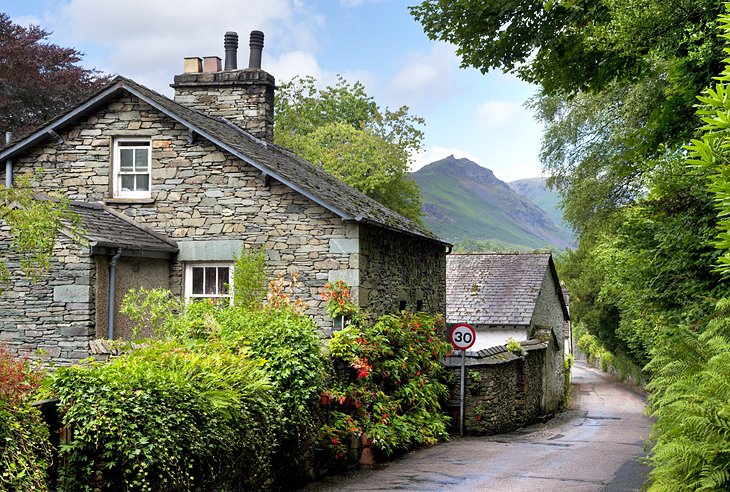
Her legacy also set the stage for the establishment of Lake District National Park. Encompassing 12 of the country's largest lakes including Windermere and Ullswater, the two biggest and best known, this beautiful region is another famous place in the UK that's great to explore on foot. All told the park boasts more than 3,218 kilometers of hiking and walking trails, so be sure to pack your hiking boots.
Other things to do in the Lake District include visiting Scafell Pike, at 978 meters the highest mountain in England. And, of course, there is no end of picturesque towns and villages to explore, including Grasmere.
Read More: From London to the Lake District: Best Ways to Get There
8. Medieval York and its Minster
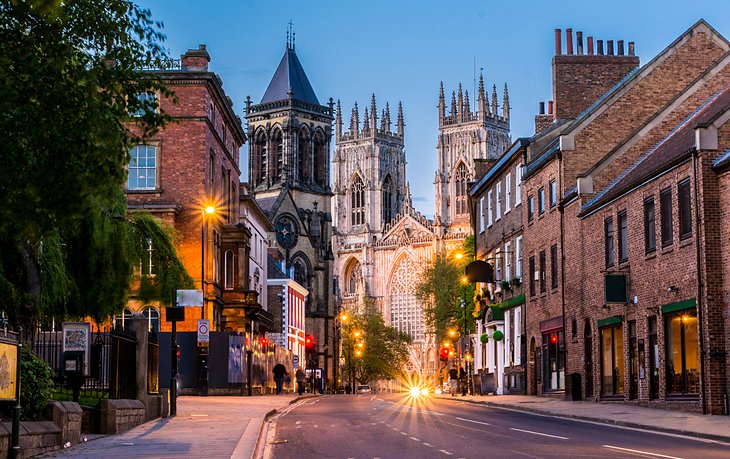
One of northern England's most popular tourist destinations, the medieval city of York, long the ecclesiastical capital of the Church of England, boasts one of the country's most magnificent cathedrals. The country's largest medieval church, York Minster can trace its roots back to the spread of Christianity in the 3rd century, although the splendid present Gothic structure was built almost 1,000 years later.
One of the best ways to get to see this historic landmark is via an official guided tour. I recommend you book in advance, and spend a little time reviewing the available choices to find one best suited to your interests. I opted for the fascinating "Tower Trip" option, a little more expensive but well worth the cost for the magnificent city views.
Other highlights of a visit to York Minster include seeing its spectacular 14th-century stained glass windows, plus the richly decorated interiors of the choir and north transept. You'll also want to visit the crypt, which contains parts of the original 11th-century church the cathedral now stands on.
Another York landmark worth exploring is the historic City Walls. I make a point of strolling this nearly five-kilometer-long structure each and every time I visit the city. Not only is it good exercise, but it's also a fun way to circle around the old medieval city center without the crowds.
Along the way, you'll enjoy excellent views over The Shambles, a narrow 14th-century roadway that's famous for its fine old timber-framed buildings, many of which hang over the street below. It's also an area known for its many restaurants and tearooms, as well as its many boutique shops and galleries.
York also boasts a number of major museums, the most popular being the National Railway Museum. Highlights of this museum's vast collection include many fine old steam engines dating as far back as 1820, plus a unique collection of Royal Trains. The museum also offers an excellent afternoon tea experience in the historic Countess of York railway carriage, bookable in advance.
Read More:
9. The University Towns of Cambridge & Oxford
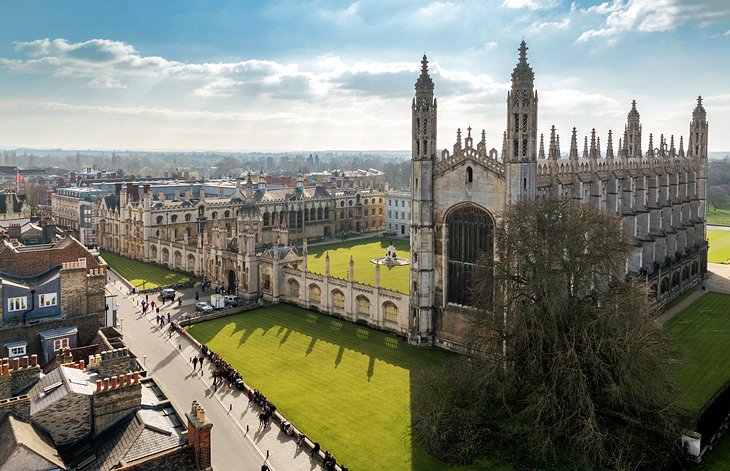
The UK has long been a center of learning, with two of its most famous university towns also ranking highly as tourist destinations. An easy commute north of London and just 128 kilometers apart, Cambridge and Oxford have for centuries been rivals for the title of the country's top academic establishment, a rivalry celebrated during the famous rowing event, The Boat Race, which takes place each spring on the River Thames.
Despite this generally good-spirited rivalry, each location offers plenty of attractions to make them worthwhile additions to your UK travel itinerary. Highlights of a visit to Cambridge include the chance to wander the UK's largest collection of preserved historic buildings, many of them located within an easy walk of Cambridge University's 31 colleges, the oldest of which was founded in 1284.
In addition to touring the stunning college grounds (only a handful of the university's buildings offer tours), you should also take a punt along the River Cam. This must-do activity is something of a Cambridge ritual, and chances are you'll even be "punted" along by a university student willing to share a little of their college experiences.
As with most popular tourist destinations, however, a little advance planning will ensure you find a reputable company for your punting tour. Licensed operators to consider include Cambridge Punt Company, which also offers a private romantic evening tour; and Scholars Punting, which features a fun picnic hamper package worth considering. In both cases, you can keep the cost down by joining a shared tour.
Oxford University's 38 colleges are equally fun to explore. These historic old places of learning are each set around a quadrangle and several inner courtyards along with chapels, dining halls, libraries, and student residences, some of which offer unique tourist accommodation packages, too. Like most UK tourist sites, they do get extremely busy in summer so be sure to book your visit in advance if you can to avoid disappointment.
Other Oxford highlights include the Carfax Tower, with its fine views over the city center, and the many fine old buildings of the town's High Street.
10. England's Pilgrimage City: Canterbury
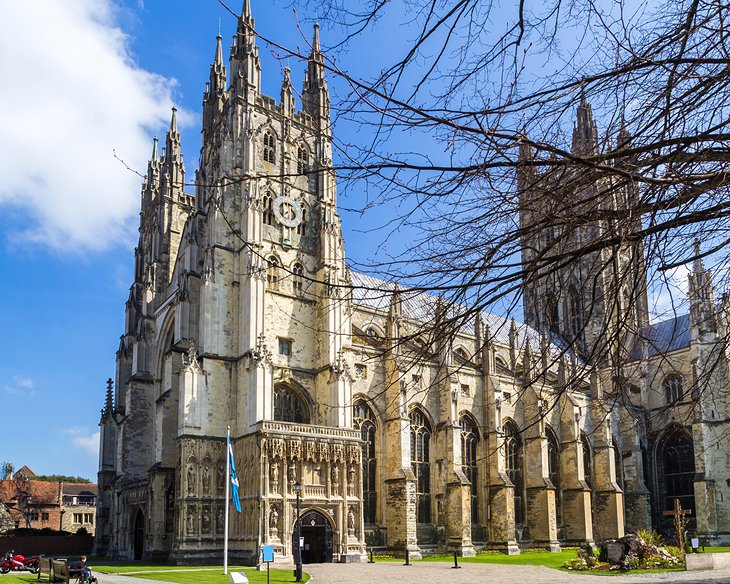
Pay a visit to historic Canterbury in Kent, and you'll soon discover why this beautiful city continues to be such a draw for visitors to the UK.
An easy hour's train ride from central London, Canterbury has been a draw for visitors for centuries. The first visitors were religious pilgrims who have in fact been visiting for more than 1,500 years, ever since St. Augustine first started converting pagan Anglo-Saxons to Christianity here in AD 597.
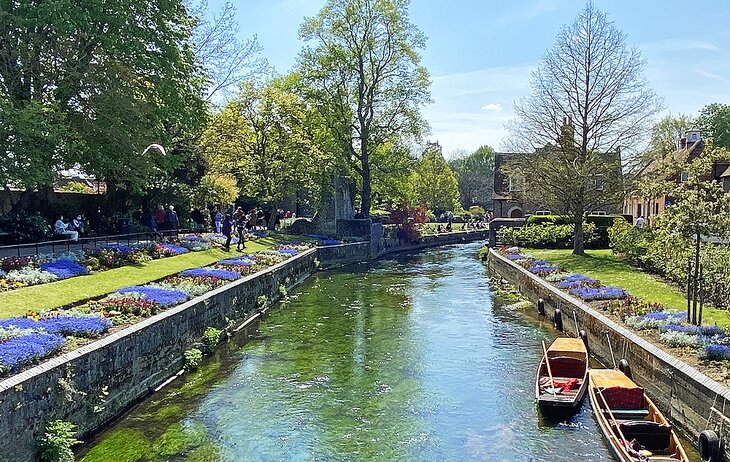
The city's most famous attraction is Canterbury Cathedral, the home church of the Archbishop of Canterbury. Now a UNESCO World Heritage Site, this stunning cathedral offers plenty to see, from the intricately carved masonry of its exterior to its magnificent interior, a highlight of which is the beautiful choir with its statues of six English kings. Also of note are the exquisite Miracle Windows, dating from the 12th century and depicting scenes from the life of murdered Archbishop Thomas Becket.
Afterward, be sure to spend time wandering the pedestrianized area of Old City Canterbury with its many preserved, historic timber-framed buildings, particularly along Mercery Lane. Be sure to include the excellent Canterbury Roman Museum on your itinerary. It was built around the remains of an original Roman townhouse and its unique mosaic.
Read More: From London to Canterbury: Best Ways to Get There
11. Loch Ness and Inverness
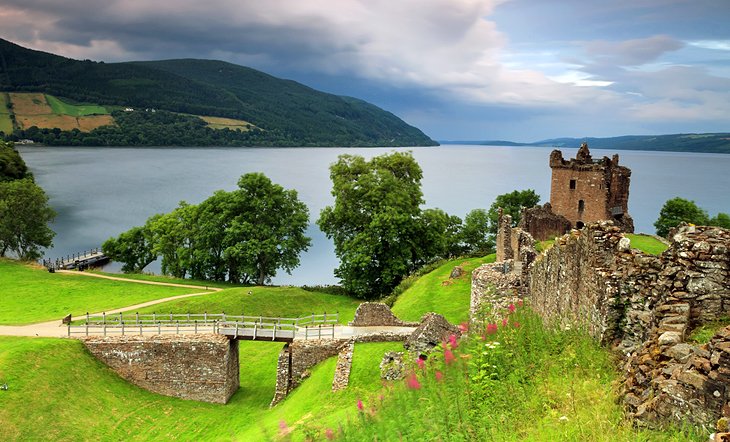
Despite the fact that the legends of mythical monsters have largely been debunked (just don't tell the locals), spectacular Loch Ness remains an extremely popular tourist attraction for travelers heading to Scotland. While it's unlikely you'll encounter any monsters, you will, however, be rewarded with seeing some of the UK's most beautiful scenery.
Highlights of Loch Ness include the ruins of Urquhart Castle. Set overlooking the loch, it's one of Scotland's largest fortifications, with the current structure dating from the 14th century. For those wanting to learn more about the area's many legends, the Loch Ness Centre and Exhibition recounts its history, along with that of its monster, including details of ongoing searches for the elusive creature.
A little farther north is Inverness. This lovely city boasts numerous excellent attractions, including Inverness Castle, the Inverness Museum and Art Gallery, and the late 19th-century St. Andrew's Cathedral.
History buffs should also check out the Culloden Battlefield and Visitors Centre. It was in Culloden in 1746 that the English and Scots fought their last battle and where the fate of Scotland as a British dominion was determined. Also of interest are the gravestones of warriors from the Scottish clans, as well as the six-meter-high Memorial Cairn erected in 1881 to commemorate the battle.
Read More:
12. Northern Ireland's Giant's Causeway
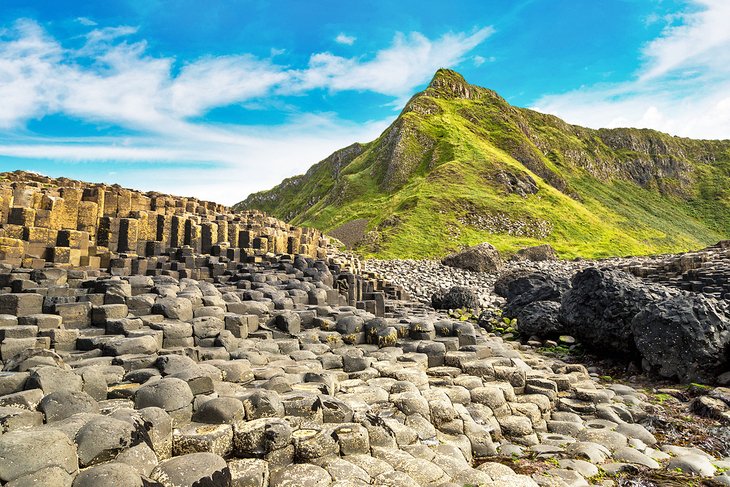
It's sometimes a little too easy to forget that the UK includes a tiny little piece of Ireland. Northern Ireland, consisting of the northeast corner of the "Emerald Isle," can easily be included on a trip to either country and is well worth taking the time to explore.
My favorite among the many Northern Ireland attractions worth visiting is the magnificent Giant's Causeway, a stunningly beautiful natural feature that looks anything but natural. Just a short drive from the capital of Belfast, this UNESCO World Heritage Site is made up of unusual columns of layered basalt that jut upwards out of the sea and shoreline like some giant's staircase, hence their name.
All told, there are some 4,000 of these polygonal-shaped steps to see and clamber over. Formed over 60 million years ago during a period of intense volcanic activity, it's a truly impressive sight, and easy to see how local legends of giants could so easily have sprung up as a result.
A modern visitor center has been opened here and provides fascinating details about the reality and the myths behind this bucket-list attraction. Guided tours can be arranged, and be sure to make use of the audio guides that are provided with admission. Tickets can be booked online in advance to avoid disappointment.
Address: 44 Causeway Road, Bushmills, Antrim, Northern Ireland
Read More: From Dublin to Giant's Causeway: Best Ways to Get There
13. Liverpool: Home of The Beatles
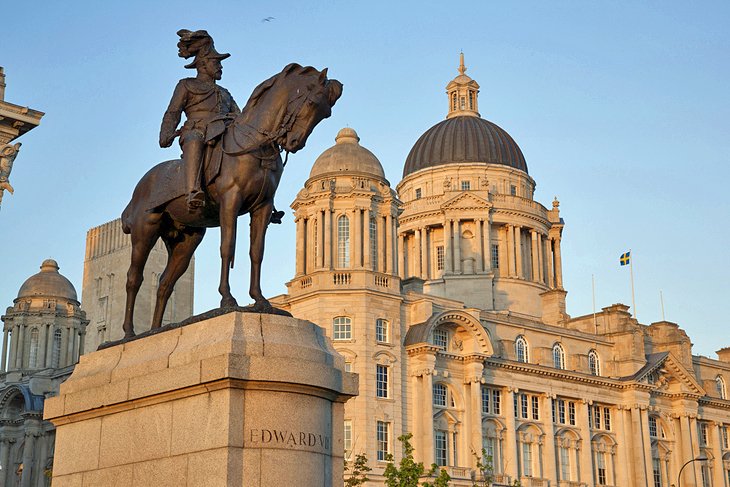
Liverpool, under three hours away from London by rail, offers plenty of cultural excitement for the curious traveler. It's also well-known for its role in giving rise to the English music legacy, not least because of its association with the Beatles.
Music fans are drawn here first and foremost for "Fab Four"-related attractions, such as The Beatles Story located in the renovated Albert Docks area. Also worth seeing are the famous Cavern Club, where the band made its debut in 1961, as well as the former homes of John Lennon and Paul McCartney. Numerous walking tours and bus tours of Beatles sites are also readily available.
Other great reasons to visit Liverpool include its many historic buildings, lovely gardens, and parks, as well as great museums such as the Merseyside Maritime Museum, the Museum of Liverpool, and world-class art galleries like the Walker Art Gallery and the Tate Gallery. These are all located in the city's revitalized Royal Albert Dock area, an historic area enjoyed exploring on foot.
14. Manchester: England's Football Mad City
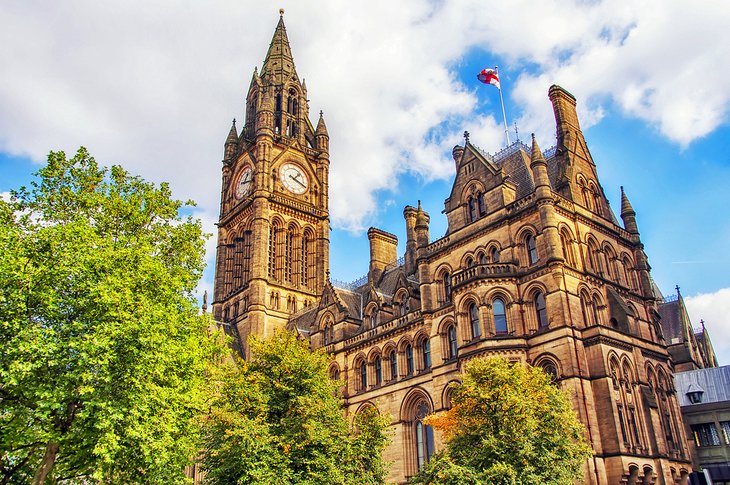
Thanks to its international airport, Manchester is often the first stop for many visitors from North America planning to explore northern England, Scotland, or Wales. It's especially popular for fans of the sport of football (that's soccer to those from the US, including Ted Lasso!).
Manchester is, in fact, home to two top football clubs: Manchester United and Manchester City. Both are well represented in the must-visit National Football Museum, as are other popular teams from around the UK. Along with displays of memorabilia, trophies, and clothing, fun short movies explain the history of the sport and capture many of its defining moments.
Be sure to also visit at least one Manchester club's stadium, too. The best known is Manchester United's Old Trafford grounds, though Manchester City's Etihad Stadium is also worth seeing. Both offer fascinating tours and behind-the-scenes access. Better still, try to visit when there's a game on!
Other notable places to visit in Manchester include Castlefield, popular for its well-preserved Victorian houses, canals, and Roman ruins. It's also popular to explore on foot for its many old warehouses now serving as trendy shops, hotels, and restaurants.
If you've got time left in your Manchester itinerary, be sure to include Manchester Cathedral and the historic Town Hall. There's also a rich cultural scene that includes museums (Museum of Science and Industry), galleries (Manchester Art Gallery), and entertainment (Chinatown).
15. Cardiff: The Capital of Wales
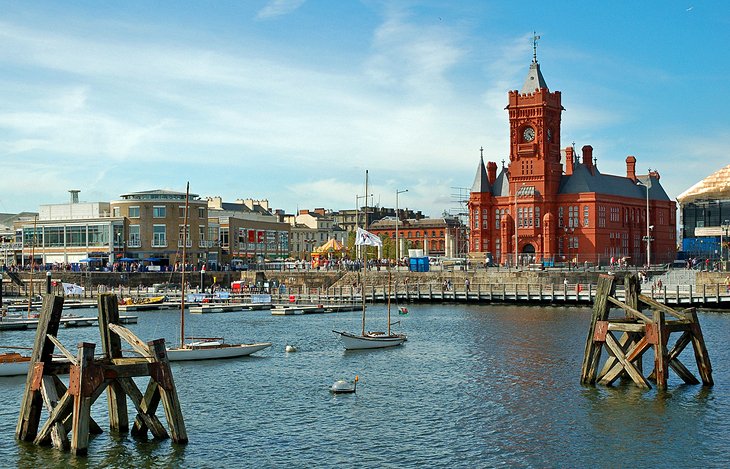
Despite being much smaller than both Scotland and England, Wales is home to some of the UK's top attractions. Interesting things to do here range from exploring the breathtaking scenery and enjoying outdoor adventures in its national parks to visiting its historic castles.
One of the best places to sample a little of everything that Wales has to offer is the country's capital, Cardiff, with most travelers beginning their visit at Cardiff Castle. Located in the middle of the city and built on the ruins of an ancient Roman fort, parts of the current structure date as far back as 1090, with much of it restored in the 1800s. Highlights include the State Apartments, the Clock Tower, the Chapel, and a spectacular Banqueting Hall with its fine murals.
Afterward, be sure to spend time wandering the city's many old Victorian shopping arcades, the best of which can be found around The Hayes. You'll find everything from second-hand record stores to boutique clothing shops and custom jewelers to browse.
Also worth checking out is Cardiff Bay. One of the UK's largest redevelopment projects, this vast area is now home to numerous fine restaurants, theaters, galleries, and shopping opportunities, many of them housed in former warehouses on lovely Mermaid Quay.
Read More: Top-Rated Day Trips from Cardiff
16. The Channel Islands
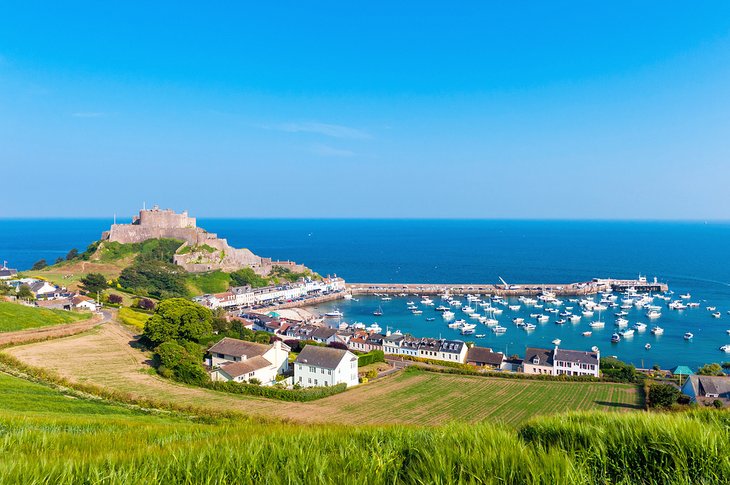
Although just 14 miles away from mainland France, the Channel Islands have been a British territory since 1066. One of the most picture-perfect destinations in the country, these attractive small islands not only boast a milder climate but offer great places to visit that don't get the large crowds like other parts of the country.
The Channel Islands comprise Jersey (the largest island), Guernsey, Alderney, Sark, and Herm (the smallest), along with numerous even tinier islands. The intrepid traveler will also be rewarded with everything from quaint seaside towns and villages to explore, historic castles and ruins (sometimes one and the same), as well as outdoor adventures and wildlife spotting.
As for getting here, the Channel Islands are well served by ferries from mainland England, as well as short flights from most major British airports.
Read More: Exploring the Top Attractions of the Channel Islands
17. Glasgow & Loch Lomond

The Scottish city of Glasgow is a great place to visit for those who enjoy a mix of cultural attractions and the great outdoors. Once you've had your fix of historic sites such as Glasgow Cathedral and the museums of the University of Glasgow, among others, head out to explore nearby Loch Lomond.
Loch Lomond was dubbed "The Queen of Scottish Lakes" by famed writer Walter Scott, and it's here you'll see Ben Lomond and the beautiful Trossachs countryside. Trossachs National Park now includes Loch Lomond itself and covers some 720 square miles of prime hiking and biking country.
It's also popular for its fishing and boating, including sailing, canoeing, and kayaking. For true outdoor enthusiasts, Loch Lomond is the perfect spot for a "wild camping" adventure. Not only is it safe, you're never too far away from people if you need them. And, of course, you'll agree that the scenery here is even more beautiful when you have it all to yourself.
18. Snowdonia: Wales' Biggest Mountains
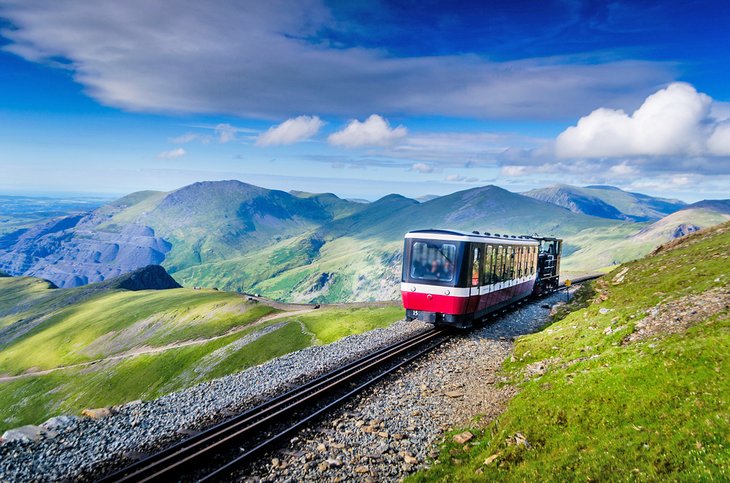
Not only does the Snowdonia region of Wales boast some of the country's most remarkable scenery — and that's saying something, as it really is a beautiful country — it's also home to the UK's second largest national park: Snowdonia National Park. Spread across nearly 830 square miles, the park is as big a draw for adventurers as it is for those seeking a pleasant and not-too-exhausting day trip.
If you're a hiker you can choose from a variety of trails that wind their way up (and down) Mount Snowdon itself, spending a full day tackling as difficult a route to the top as you desire. And those like me who want to see the spectacular views from the top without all the hard work can take the Snowdon Mountain Railway.
Considered one of the world's top scenic railways, the journey starts in Llanberis before tackling steep inclines up to the "Eryri" visitor center at the top of Snowdon.
Read More: Top-Rated Attractions & Things to Do in Snowdonia
19. Belfast
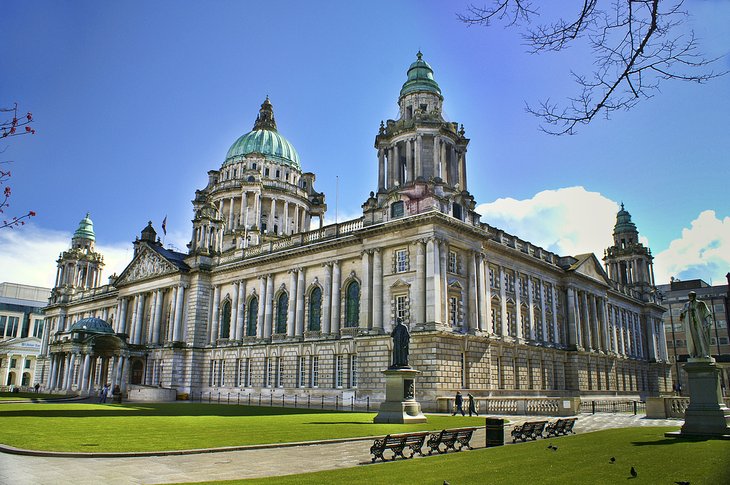
Once omitted from the itineraries of most travelers to the UK, Belfast, the capital city of Northern Ireland, has in recent years become something of a must-see destination. Not only are there numerous historic attractions and cultural experiences to enjoy, but the city's people have the same welcoming attitude that the European nation of Ireland to the south is known for.
One of the city's top claims to fame was its role in the building of the ill-fated ocean liner, RMS Titanic. This connection is celebrated and memorialized in the city's Titanic Quarter, home to the impressive Titanic Belfast attraction. Here, you can explore interactive exhibits that deal not only with the vessel, but the thousands of people involved in its construction and, ultimately, its sinking.


